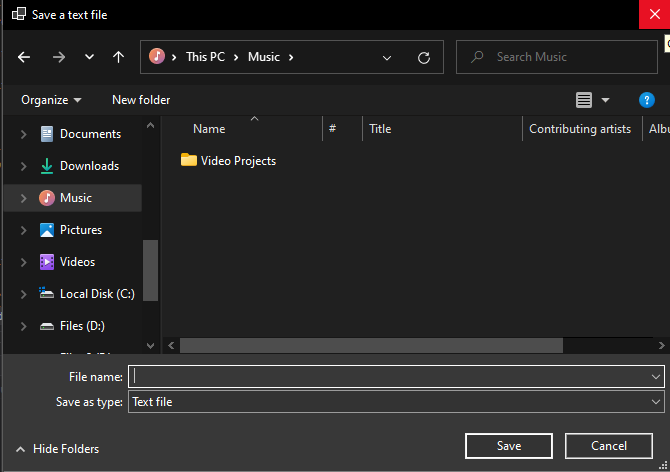I think this will do everything you are asking. Please test thoroughly.
public partial class Form1 : Form
{
string Filename = null;
string Previous = string.Empty;
public Form1()
{
InitializeComponent();
}
private void exitToolStripMenuItem_Click(object sender, EventArgs e)
{
Close();
}
private void saveAsToolStripMenuItem_Click(object sender, EventArgs e)
{
if (SaveAs())
{
Previous = textBox1.Text;
}
}
/// <summary>
/// Saves to a file selected by the user
/// </summary>
/// <returns>true if something was saved</returns>
private bool SaveAs()
{
SaveFileDialog sfd = new SaveFileDialog();
sfd.Filter = "Text file|*.txt|All files|*.*";
sfd.Title = "Save a text file";
if (sfd.ShowDialog() != DialogResult.OK)
return false;
if (sfd.FileName == "")
return false;
try
{
using (StreamWriter sw = new StreamWriter(sfd.FileName))
{
sw.Write(textBox1.Text);
Filename = sfd.FileName;
}
}
catch (Exception ex)
{
MessageBox.Show("Write error: " + ex.Message);
return false;
}
return true;
}
private void saveToolStripMenuItem_Click(object sender, EventArgs e)
{
if (Save())
{
Previous = textBox1.Text;
}
}
/// <summary>
/// Saves to the file; calls SaveAs if no previous file
/// </summary>
/// <returns>true if something was saved</returns>
private bool Save()
{
if (Filename == null)
{
bool saved = SaveAs();
if (saved)
{
Previous = textBox1.Text;
}
return saved;
}
try
{
using (StreamWriter sw = new StreamWriter(Filename))
{
sw.Write(textBox1.Text);
}
}
catch (Exception ex)
{
MessageBox.Show("Write error: " + ex.Message);
return false;
}
return true;
}
private void closeToolStripMenuItem_Click(object sender, EventArgs e)
{
AskToSave();
}
private void AskToSave()
{
if (textBox1.Text == Previous)
{
Filename = null;
return;
}
DialogResult dr = MessageBox.Show(
"Do you wish to save changes?",
"Unsaved changes",
MessageBoxButtons.YesNo,
MessageBoxIcon.Question
);
if (dr != DialogResult.Yes)
return;
Save();
Previous = string.Empty;
Filename = null;
}
private void openToolStripMenuItem_Click(object sender, EventArgs e)
{
OpenFileDialog ofd = new OpenFileDialog();
ofd.Filter = "Text file|*.txt|All files|*.*";
if (ofd.ShowDialog() != DialogResult.OK)
return;
try
{
using (StreamReader sr = new StreamReader(ofd.FileName))
{
Previous = sr.ReadToEnd();
textBox1.Text = Previous;
Filename = ofd.FileName;
}
}
catch (Exception ex)
{
MessageBox.Show("Read error: "+ex.Message);
}
}
private void Form1_FormClosing(object sender, FormClosingEventArgs e)
{
AskToSave();
}
}



